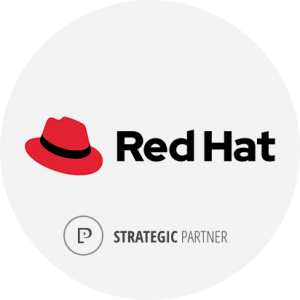With the growing popularity of the cloud, enterprises are looking for ways to adopt cloud-native development into their existing processes. New applications can be built using cloud models and services, microservices, autonomous development teams, agile and continuous development, and containers. However, it is time-consuming, costly, and inefficient to create new applications instead of learning to leverage your enterprise’s legacy applications differently.
Red Hat’s catalog of development software and tools can help you take the first step to be cloud-native with a “lift-and-shift” approach. This method enables you to make the smallest number of necessary changes in order to successfully run the application in a cloud environment.
With this method, you will:
- Containerize your existing workloads
- Deploy the workload on a Platform-as-a-Service (PaaS)
- Keep external integrations and data on your legacy platform
As you work through these steps, you can start to replace select in-app functions with microservices. Once your application is up and running in the cloud, you can then modernize it to be designed for a cloud-native environment. Instead of just rehosting the application, you would redesign it and move unnecessary dependencies and libraries outside of the application.
Unlock Your Potential with Application Modernization
Application modernization is a growing area of focus for enterprises. If you’re considering this path to cloud adoption, this guide explores considerations for the best approach – cloud native or legacy migration – and more.
How to leverage Red Hat software during the “lift-and-shift” process
- Use the Application Migration Toolkit to analyze your existing applications and migrate them to open, standard interfaces.
- Update your code and configuration to run on the JBoss Enterprise Application Platform (JBoss EAP).
- Use OpenShift to deploy the workload as a container and enhance your application with automatic scaling, integrated clustering, and failover.
Application Migration Toolkit
This toolkit is a set of open-source tools that enable large-scale application migrations and modernizations. You can use it to:
- Plan work estimations
- Identify migration issues and solutions
- Evaluate reports
- Use built-in rules and migration paths
- Provide rule extension
- Analyze source code or application archives
It provides a high-level view of the technologies used by your application, and offers a detailed report that you can use to estimate, document, and migrate Java applications to JBoss.
JBoss
The JBoss EAP is an open-source platform for modern Java applications that are deployed in any environment – on-premises, public, private, or hybrid cloud. It provides enterprise-grade security and compliance, performance, and scalability to organizations that need developer-friendly technology, high productivity, and flexible deployment. JBoss EAP can support a wide range of Java applications, including HTML5 mobile applications, microservices apps, and even highly transactional applications.
OpenShift
OpenShift is a hybrid cloud, enterprise-level Kubernetes application platform. It enables developers to build with speed and deploy at-scale in any environment.
After you have deployed the application to OpenShift, you can use additional tools to convert specific functions to microservices.
Learn more about OpenShift and its current capabilities. You can also read more about Red Hat and our partnership here.


